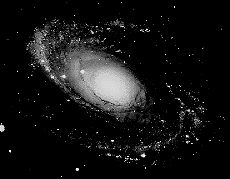|
EXAMPLES OF COGNITIVE DISSONANCE IN THE HISTORY OF SCIENCE We present here two examples: Example #1: "A decade before Hubble found the cosmos to be expanding, Einstein's equations showed that it should be either expanding or contracting. Unable to believe his own results, Einstein rewrote them to let it stay static" (Beyond the Milky Way, Time-Life, Inc. New York, p. 178). In a letter, Einstein wrote, "The circumstance of an expanding universe is irritating" ("New York Times" Magazine, June 25, 1978). In another letter he wrote, "To admit such possibilities seems senseless to me" (ibid.). In the PBS science special, "The Creation of the Universe," produced by Timothy Ferris, the same point is made as follows: "The expansion of the universe was predicted by Einstein's general theory of relativity, published in 1915. But the idea seemed so outlandish that Einstein himself rejected it. He introduced an extraneous term into the field equations to try to make his theoretical universe stand still. Later Einstein would call this modification of the theory, 'the worst blunder of my career.' Then, in 1929, the American astronomer Edwin Hubble, without knowing of the relativity prediction, discovered that the universe is indeed expanding." Example #2: Today, it is common knowledge that the Milky Way Galaxy, which contains our sun and solar system as well as some 50 billion stars, is just one of billions of other galaxies, each containing billions of stars of its own. Not long ago, scientists were not even considering that other galaxies existed. An excerpt from a Time-Life series shows quite clearly that for several years, scientists stubbornly refused to accept unequivocal evidence that their one-galaxy view of the universe was terribly narrow: "Curtis undertook to announce to the world what seemed to him unequivocal evidence that nebulae containing faint novae are separate galaxies. But the world -- at least of astronomy -- was not ready to accept the huge universe that Curtis had to offer. An historic wrangle ensued, continuing at one astronomer's conference after another from 1917 to 1924... Then, abruptly, at a conference session of January 1, 1925, the great debate ended with the reading of a communication from the California astronomer Edwin Hubble...
"The momentous news he had to report was that the new telescope had resolved images of stars in three so-called nebulae: M 31 in Andromeda, NGC 6822 and M33... In the course of this stupendous intellectual voyage -- a rolling back of human horizons unparalleled in previous history and not likely to be equaled ever again -- Hubble calculated that there were almost as many galaxies outside the Milky Way as there are stars in it" (Beyond the Milky Way, Time-Life, Inc. New York, p. 148). In sum, "unequivocal" evidence about the size of the universe was available for all to see in 1917. Nevertheless, the implications of this new evidence were so startling, so unsettling, it was as if no new evidence existed at all.
|
